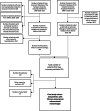The clinical course and outcomes of non-aneurysmal subarachnoid hemorrhages in a single-center retrospective study
- PMID: 37659045
- PMCID: PMC10542109
- DOI: 10.1007/s00701-023-05767-4
The clinical course and outcomes of non-aneurysmal subarachnoid hemorrhages in a single-center retrospective study
Erratum in
-
Correction to: The clinical course and outcomes of non-aneurysmal subarachnoid hemorrhages in a single-center retrospective study.Acta Neurochir (Wien). 2023 Dec;165(12):3707. doi: 10.1007/s00701-023-05834-w. Acta Neurochir (Wien). 2023. PMID: 37878129 Free PMC article. No abstract available.
Abstract
Background: Non-aneurysmal subarachnoid hemorrhages (SAHs) are thought to have a benign clinical course compared to aneurysmal SAHs. The aim of this study is to report the clinical course and outcomes of non-aneurysmal SAHs in a large single-center study.
Methods: The patients with non-aneurysmal SAHs were screened from Tampere University Hospital from 2005 to 2020. The clinical data were collected from the patient's medical records and from the imaging studies. The primary interest was the neurological outcome assessed by dichotomized GOS at 2 months. Multivariable logistic regression was used to study the factors associated with unfavorable outcome.
Results: We found 216 non-aneurysmal SAHs in 214 patients (2 patients with > 1 bleed). Ninety-seven percent of patients with a typical perimesencephalic bleeding pattern SAH (PSAH) (75/77) had a favorable outcome, while 86% of patients with non-perimesencephalic SAH (NPSAH) had a favorable outcome (84/98). In a multivariable logistic regression analysis, loss of consciousness (LOC) (aOR 214.67, 95% CI 17.62-2615.89) and Fisher grade 4 bleeding pattern (aOR 23.32, 95% CI 1.40-387.98) were associated with increased risk for unfavorable outcome (GOS 1-3). Vasospasm was seen in 20% of non-aneurysmal SAH patients, hydrocephalus in 17%, and 13% needed ventriculostomy.
Conclusions: Non-aneurysmal SAH seems to have a good prognosis for majority of patients, especially for patients with a PSAH. Non-aneurysmal SAH patients are however affected by vasospasm and hydrocephalus and have similar risk factors for poor outcome as patients with aneurysmal SAH. This suggests that it is the severity of the bleed rather than the etiology that associates with poor outcome.
Keywords: Hydrocephalus; Loss of consciousness; Non-aneurysmal subarachnoid hemorrhage; Outcome; Vasospasm.
© 2023. The Author(s).
Conflict of interest statement
The authors declare no competing interests.
Figures



References
-
- Akbik F, Pimentel-Farias C, Press DA, Foster NE, Luu K, Williams MG, Andea SG, Kyei RK, Wetsel GM, Grossberg JA, Howard BM, Tong F, Cawley CM, Samuels OB, Sadan O. Diffuse angiogram-negative subarachnoid hemorrhage is associated with an intermediate clinical course. Neurocrit Care. 2022;36(3):1002–1010. doi: 10.1007/s12028-021-01413-y. - DOI - PubMed
-
- Angermann M, Jablawi F, Angermann M, Conzen-Dilger C, Schubert GA, Höllig A, Veldeman M, Reich A, Hasan D, Ridwan H, Clusmann H, Wiesmann M, Nikoubashman O. Clinical outcome and prognostic factors of patients with perimesencephalic and nonperimesencephalic subarachnoid hemorrhage. World Neurosurg. 2022;165:e512–e519. doi: 10.1016/j.wneu.2022.06.086. - DOI - PubMed
Publication types
MeSH terms
LinkOut - more resources
Full Text Sources
Medical

